
The costs of inequality: Increasingly, it’s the rich and the rest
Economic and political inequities are interlaced, analysts say, leaving many Americans poor and voiceless
Second in a series on what Harvard scholars are doing to identify and understand inequality, in seeking solutions to one of America’s most vexing problems.
“We can either have democracy in this country or we can have great wealth concentrated in the hands of a few, but we can’t have both,” Associate Supreme Court Justice Louis Brandeis said decades ago during another period of pronounced inequality in America.
Echoing the concern of the Harvard Law School (HLS) graduate, over the past 30 years myriad forces have battered the United States’ legendary reputation as the world’s “land of opportunity.”
The 2008 global economic meltdown that eventually bailed out Wall Street financiers but left ordinary citizens to fend for themselves trained a spotlight on the unfairness of fiscal inequality. The issue gained traction during the Occupy Wall Street protest movement in 2011 and during the successful U.S. Senate campaign of former HLS Professor Elizabeth Warren in 2012.
What was once viewed as a fringe political issue is now at the heart of the angry, populist rhetoric of the 2016 presidential campaign. Personified by outsider candidates Bernie Sanders and Donald Trump, economic inequality has resonated with broad swaths of nervous voters on both the left and right.
“Smart poor kids are less likely to graduate from college now than dumb rich kids. That’s not because of the schools, that’s because of all the advantages that are available to rich kids.”
— Robert Putnam
Lawrence Katz, the Elisabeth Allison Professor of Economics in Harvard’s Faculty of Arts and Sciences (FAS), says the most damaging aspects of the gap between the top 1 percent of Americans and everyone else involve the increasing economic and political power that the very rich wield over society, along with a growing educational divide, and escalating social segregation in which the elites live in literal and figurative gated communities.
If the rate of economic mobility — the ability of people to improve their economic station — was higher, he says, our growing income disparity might not be such a problem.
“But what we have been seeing is rising inequality with stagnant mobility, which means that the consequences of where you start out, whether it’s in a poor neighborhood, whether it’s from a single-parent household, are more consequential today than in the past. Your ZIP code and the exact characteristics of your parents seem to matter more,” said Katz. “And that’s quite disturbing.”
The growing gap between the rich and the rest isn’t a matter of who can afford a yacht or a Manhattan penthouse, analysts say. Rather, it’s the crippling nature of these disparities as they touch nearly every aspect of daily lives, from career prospects and educational opportunities to health risks and neighborhood safety.
The widening income gap also has fueled a class-based social disconnect that has produced inequitable educational results. “Now, your family income matters more than your own abilities in terms of whether you complete college,” said Robert Putnam, the Peter and Isabel Malkin Professor of Public Policy at Harvard Kennedy School (HKS). “Smart poor kids are less likely to graduate from college now than dumb rich kids. That’s not because of the schools, that’s because of all the advantages that are available to rich kids.”
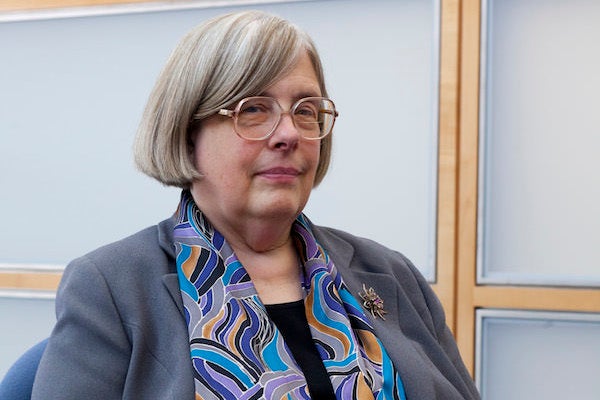
Economic inequality also feeds the political kind, driving everything from the actions of our political representatives to the quality and quantity of civic engagement, such as voting and community-based public service.
“It’s long been known that the better educated, those with higher incomes, participate more” in politics on “everything from voting to contacting politicians to donating,” said Theda Skocpol, the Victor S. Thomas Professor of Government and Sociology at FAS. “What is quite new in recent times is … very systematically, that government really responds much more to the privileged than to even middle-income people who vote.”
Money eases access
The U.S. Supreme Court’s unlacing of campaign-finance laws that limited how much donors could give candidates or affiliate organizations, coupled with allowing donors to shield their identities from public scrutiny, have spawned a financial arms race that requires viable presidential candidates, for example, to solicit donors constantly in a quest to raise $1 billion or more to win.
Given that rulebook, it’s hardly surprising that the political supporters with the greatest access to candidates are usually the very wealthy. Backers with both influence and access often help to shape the political agenda. The result is a kind of velvet rope that can keep those without economic clout on the sidelines, out of the conversation.
“In the current election cycle, 158 families have given half the money to candidates.”
— Lawrence Lessig
“Something like the carried-interest provision in the tax code, when you explain it to ordinary citizens, they don’t like the idea that income earned by investing other people’s money should be taxed at a lower rate than regular wage and salary income. It’s not popular in some broad, polling sense. But many politicians probably don’t realize it at all because … politicians spend a lot of their time asking people to give money to them [who] don’t think it’s a good idea to change that,” said Skocpol. “There’s a real danger that, as wealth and income are more and more concentrated toward the top, it does become a vicious circle.”
“Money has corrupted our political process,” said Lawrence Lessig, the Roy L. Furman Professor of Law and Leadership at HLS. In Congress, he said, “They focus too much on the tiny slice, 1 percent, who are funding elections. In the current election cycle [as of October], 158 families have given half the money to candidates. That’s a banana republic democracy; that’s not an American democracy.”
Lessig was so unhappy with how political campaigns are funded that he briefly ran for president on the issue. Reviewing his efforts during a Harvard forum on the topic in November, he described his candidacy as a referendum on the campaign-finance system, but also on the need to reform Congress, which he called a “broken and corrupted institution” undercut by big donors and gerrymandered election districts.
How we got here
Christopher “Sandy” Jencks, the Malcolm Wiener Professor of Social Policy at HKS, believes that the past 30 years of rising American inequality can be attributed to three key factors:
- The decline in jobs and employment rates for less-skilled workers, which has increased the number of households with children but no male breadwinner.
- The demand for college graduates outpacing the pool of job candidates, adding to the gap between the middle class and upper-middle class.
- The share of income gains flowing to the top 1 percent of earners doubling as a result of deregulation, globalization, and speculation in the financial services industry.
The U.S. government does “considerably less” than comparable democracies to even out disposable family incomes, Jencks says. And current state and local tax policies “actually increase income inequality.”
“All the costs and risks of capitalism seem to have been shifted largely to those who work rather than those who invest,” he said.
Compounding the economic imbalance is the unlikely prospect that those at the bottom can ever improve their lot.
“We have some of the lowest rates of upward mobility of any developed country in the world,” said Nathaniel Hendren, an associate professor of economics at FAS who has studied intergenerational mobility and how inequality transmits across generations.
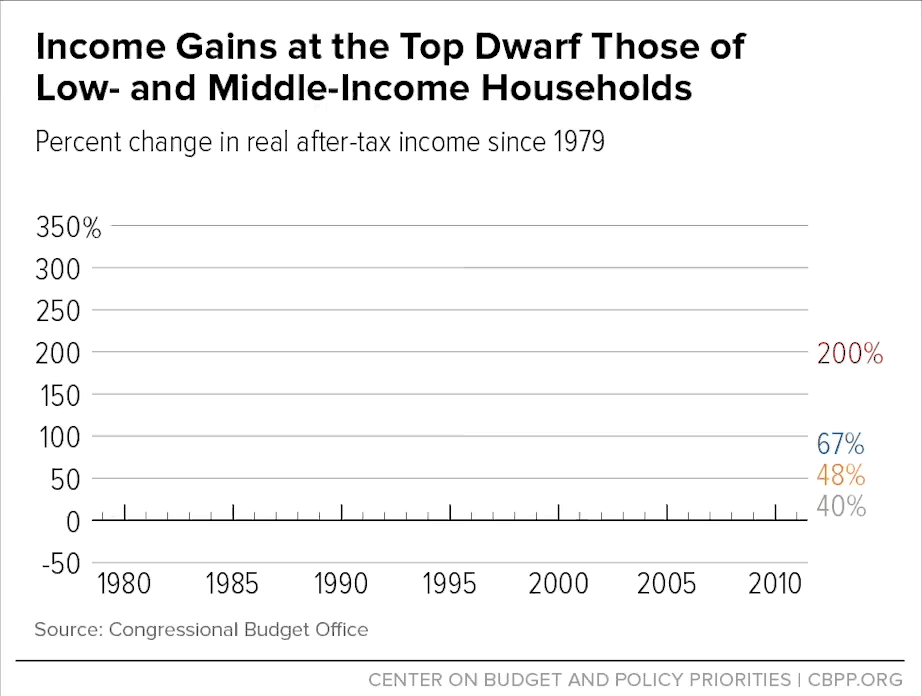
Hendren, along with Harvard economists Katz and Raj Chetty, now at Stanford University, looked at the lasting effects of moving children to better neighborhoods as part of Moving to Opportunity, a short-lived federal housing program from the ’90s. Their analysis, published in May, found that the longer children are exposed to better environments, the better they do economically in the future. Whichever city or state children grow up in also radically affects whether they’ll move out of poverty, he said.
For children in parts of the Midwest, the Northeast, and the West, upward mobility rates are high. But in the South and portions of the Rust Belt, rates are very low. For example, a child born in Iowa into a household making less than $25,000 a year has an 18 percent chance to move into the upper 20 percent of income strata over a lifetime. But a child born in Atlanta or Charlotte, N.C., has only a 4 percent chance of moving up, their study found.
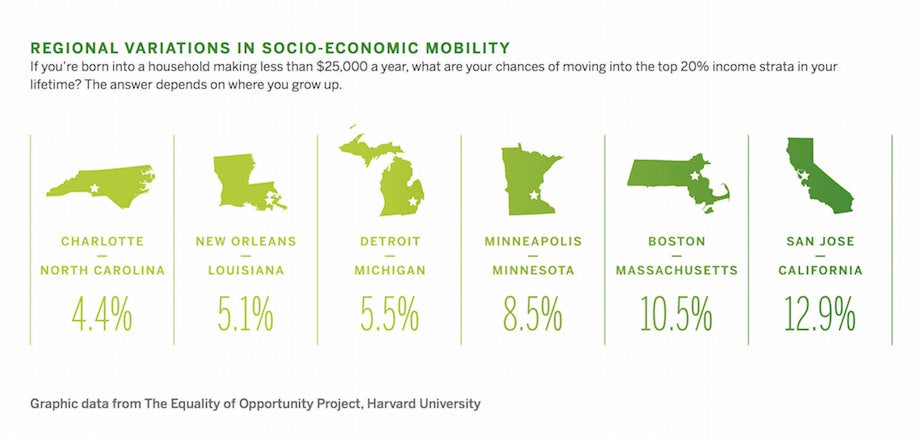
What unites areas of low mobility, Hendren says, are broken family structures, reduced levels of civic and community engagement, lower-quality K-12 education, greater racial and economic segregation, and broader income inequality.
In addition, 90 percent of American workers have seen their wages stall while their costs of living continue to rise.
“When you look at the data, it’s sobering. Median household income when last reported in 2013 was at a level first attained in 1989, adjusting for inflation. That’s a long time to go without any gains,” said Jan Rivkin, the Bruce V. Rauner Professor of Business Administration at Harvard Business School (HBS).
Wage inequality is on the rise for both genders. Within that range, the gap between men and women remains a hot-button issue despite gains by women in the past three decades. Broadly, the ratio of median earnings for women increased from 0.56 to 0.78 between 1970 and 2010.
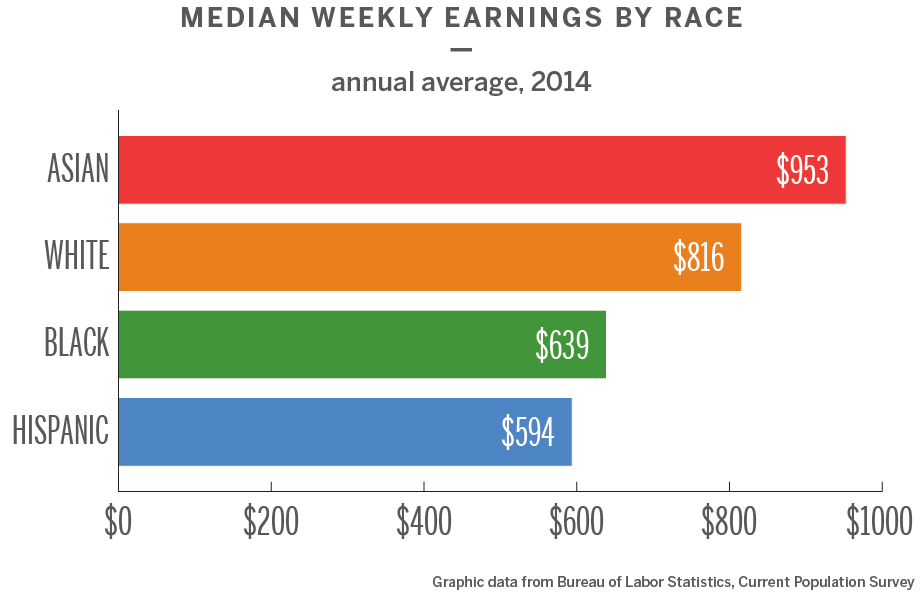
But according to Claudia Goldin, the Henry Lee Professor of Economics at FAS, the gender earnings gap is not a constant, varying widely by occupation and age. While women in their late 20s earn about 92 percent of what their male counterparts earn, women in their early 50s earn just 71 cents on the dollar that the average man makes. For some career paths, like pharmacists, veterinarians, and optometrists, corporatization has closed the gap between men and women.
Even so, wiping away the gender pay gap isn’t a cure-all for the larger issues of inequality.
“If you reduce gender inequality to zero, you’ve closed inequality … by a very small percent,” said Goldin. “I’m not saying there aren’t things that we can’t fix, but I am telling you, without a doubt, they’re going to move the lever by very little.”
Underinvestment in “the commons”
Rivkin says that the pressures of globalization and technological change and the weakening of labor unions have had a major impact. But he disagrees that political favoritism toward business interests and away from ordinary citizens is the primary reason for burgeoning inequality. Rather, he says that sustained underinvestment by government and business in “the commons” — the institutions and services that offer wide community benefits, like schools and roads — has been especially detrimental.
Last spring, HBS conducted an alumni survey for its annual U.S. Competitiveness Project research series, probing respondents for their views on the current and future state of American businesses, the prospects of dominating the global marketplace, and the likelihood that the resulting prosperity would be shared more evenly among citizens.
“What is quite new in recent times is … very systematically, that government really responds much more to the privileged than to even middle-income people who vote.”
— Theda Skocpol
The survey findings, released in September, showed that most HBS alumni were skeptical that living standards would rise more equitably soon, given existing policies and practices. A majority said that inequality and related issues like rising poverty, limited economic mobility, and middle-class stagnation were not only social ills, but problems that affected their businesses.
“My sense is that a larger and larger number of business leaders are waking up to the idea that issues of inequality, and particularly lack of shared prosperity, have to be addressed for the sake of business,” said Rivkin, the project’s co-chair.
The surging power of the very wealthy in America now rivals levels last seen in the Gilded Age of the late 19th century, analysts say. One difference, however, is that the grotesque chasm between that era’s robber barons and tenement dwellers led to major social and policy reforms that are still with us, including labor rights, women’s suffrage, and federal regulatory agencies to oversee trade, banking, food, and drugs.
Hendren said there’s no less chance today of rising or falling along the income spectrum than there was 25 years ago. “The chances of moving up or down the ladder are the same,” he said, “but the way we think about inequality is that the rungs on the ladder have gotten wider. The difference between being at the top versus the bottom of the income distribution is wider, so the consequences of being born to a poor family in dollar terms are wider.”
What price inaction?
Unless America’s policymakers begin to chip away at the underlying elements of systemic inequality, the costs to the nation will be profound, analysts say.
“I think we will pay many prices. We will continue to have divisive politics. We won’t make the investments we need to provide the majority of kids with a better life, and that would be really not fulfilling,” said Katz.
Partisan gridlock in Washington, D.C., has diminished the effectiveness of government — perhaps the most essential and powerful tool for addressing inequality and citizens’ needs. By adopting a political narrative that government should not and cannot effectively solve problems, legislative inaction results in policy inaction.
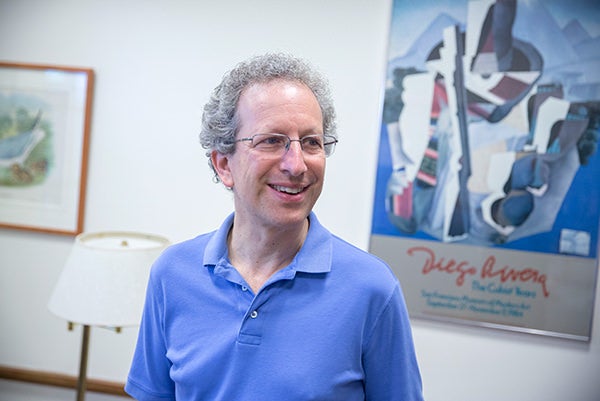
“It’s definitely been a strategy” to justify starving government of resources, which in turn weakens it and makes it less attractive as a tool to accomplish big things, said Skocpol. “In an everybody-for-themselves situation, it is the better-educated and the wealthy who can protect themselves.”
Surveying the landscape, Katz sees reasons to be both hopeful and worried.
“The optimism is that there are regions of the U.S., metropolitan areas that have tremendous upward mobility. So we do have models that work. We do have programs like Medicare and the Earned Income Tax Credit that work pretty well. I think that if national policy more approximated the upper third of state and local policies, the U.S. would have a lot of hope,” said Katz. “My pessimistic take would be that if you look at two-thirds of America, things are not improving in the way we would like.”
Putnam is heartened that inequality has been widely recognized as a major problem and is no longer treated as a fringe political issue.
What can be done?
Jencks says there are many steps the federal government could take — if the political will existed to do so — to slow down or reverse inequality, like increasing the minimum wage, revising the tax code to tax corporate profits and investments more, reducing the debt burden on college students, and improving K-12 education so more students are better prepared for college and for personal advancement.
“Strong regulation and strong support for collective control over the things that society values is much more prevalent in societies that have lower levels of inequality,” he said.
Though labor rights have been eroding for decades, Benjamin Sachs, the Kestnbaum Professor of Labor and Industry at HLS, still thinks that unions could provide an unusual way to help equalize political power nationally. Unions used to wield both economic and political clout, but legislative and court decisions reduced their effectiveness as economic actors, cutting their political influence as well. At the same time, campaign finance reform to limit the influence of wealth on politics has failed.
To restore some balance, Sachs suggests “unbundling” unions’ political and economic activities, allowing them to serve as political organizing vehicles for low- and middle-income Americans, even those whom a union may not represent for collective bargaining purposes.
“The risk that economic inequalities will produce political ones … has led to several generations of campaign finance regulation designed to get money out of politics. But these efforts have not succeeded,” Sachs wrote in a 2013 Yale Law Review article. “Rather than struggling to find new ways to restrict political spending by the wealthy … the unbundled union, in which political organization is liberated from collective bargaining, constitutes one promising component of such a broader attempt to improve representational equality.”
Still, given the historic labor and wage trend lines, Goldin said the economic forces that perpetuate unequal wages — and inequality more broadly — won’t simply disappear even with a spate of new laws.
[gz_sidebar align=”right”]
Possible solutions to economic and political inequality:
- Increase economic mobility
- Tax corporate profits, investments more
- Raise the minimum wage
- Cut the debts of college graduates
- Improve K-12 education
- Reduce the influence of money in politics
- Even out disposable family incomes
- Tax carried interest at a higher rate
- Make business taxes a compliance issue
- Mentor low-income children
- Jump-start vocational education
[/gz_sidebar]
“I think it is naïve of most individuals to think that for everything there is something that government can legislate and regulate and impose that makes life better for everybody,” she said. “That’s just not the case.”
Even so, with Congress stalled over fresh policies, analysts say that much of the innovation concerning inequality has moved to state and local levels, where partisanship is less calcified and the needs of constituents are more evident.
In Oregon and California, for example, residents will be automatically registered to vote upon turning 18, a move that Skocpol says should bolster civic participation and provide protection from onerous new voter-identification laws.
While it’s clear that investing in children and their education pays lifelong dividends for them, those gains take 20 years to be realized, said Katz. That’s why it’s critical that their parents get help and live in less vulnerable situations.
“There is certainly evidence that if we reduce the degree of economic and racial and ethnic segregation of our communities, we can move in that direction,” said Katz, who is working on an experiment to expand the Earned Income Tax Credit in New York City to help younger workers without children who are struggling to break into the labor market.
Changes to the minimum wage, the tax system, and the treatment of carried interest “are all debates in which our society should engage,” said Rivkin, who cautioned that those would be hard-fought political battles that wouldn’t yield results for at least a decade.
Of course industry needs to run its businesses productively and profitably, but it can do so without harming “the commons,” Rivkin said. “Business has been very effective at pursuing its narrow self-interest in looking for special tax breaks. I think that kind of behavior just needs to stop.” Drawing on an idea from HBS Finance Professor Mihir Desai, Rivkin suggests that businesses treat their tax responsibilities as a compliance function rather than as a profit center. That money could then go back into investment in “the commons,” where “lots of common ground” exists among business, labor, policymakers, educators, and others.
“The businesses should be working with the local community college to train the workers whom they would love to hire; the university should be getting together with policymakers to figure out how to get innovations out of the research lab into startups faster; business should work with educators to reinvent the school system,” said Rivkin.
Putnam suggests more widespread mentoring of low-income children who lack the social safety net that upper- and middle-class children enjoy, a topic he explored in his book “Our Kids: The American Dream in Crisis.”
He recently convened five working groups to develop a series of white papers that will offer overviews of the key challenges in family structure and parenting; early childhood development; K-12 education; vocational, technical, and community colleges; and community institutions. The papers will be shared with mayors and leaders in churches, nonprofits, and community organizations across the nation, where much of the reform effort is taking place.
“There’s an increasing sense that this is a big deal, that we’re moving toward an America that none of us has ever lived in, a world of two Americas, a completely economically divided country,” said Putnam. “That’s not an America I want my grandchildren to grow up in. And I think there are lots of people in America who, if they stop and think about it, would say, ‘No, that’s not really us.’”
Illustration by Kathleen M.G. Howlett.
Next Tuesday: Inequality in education




